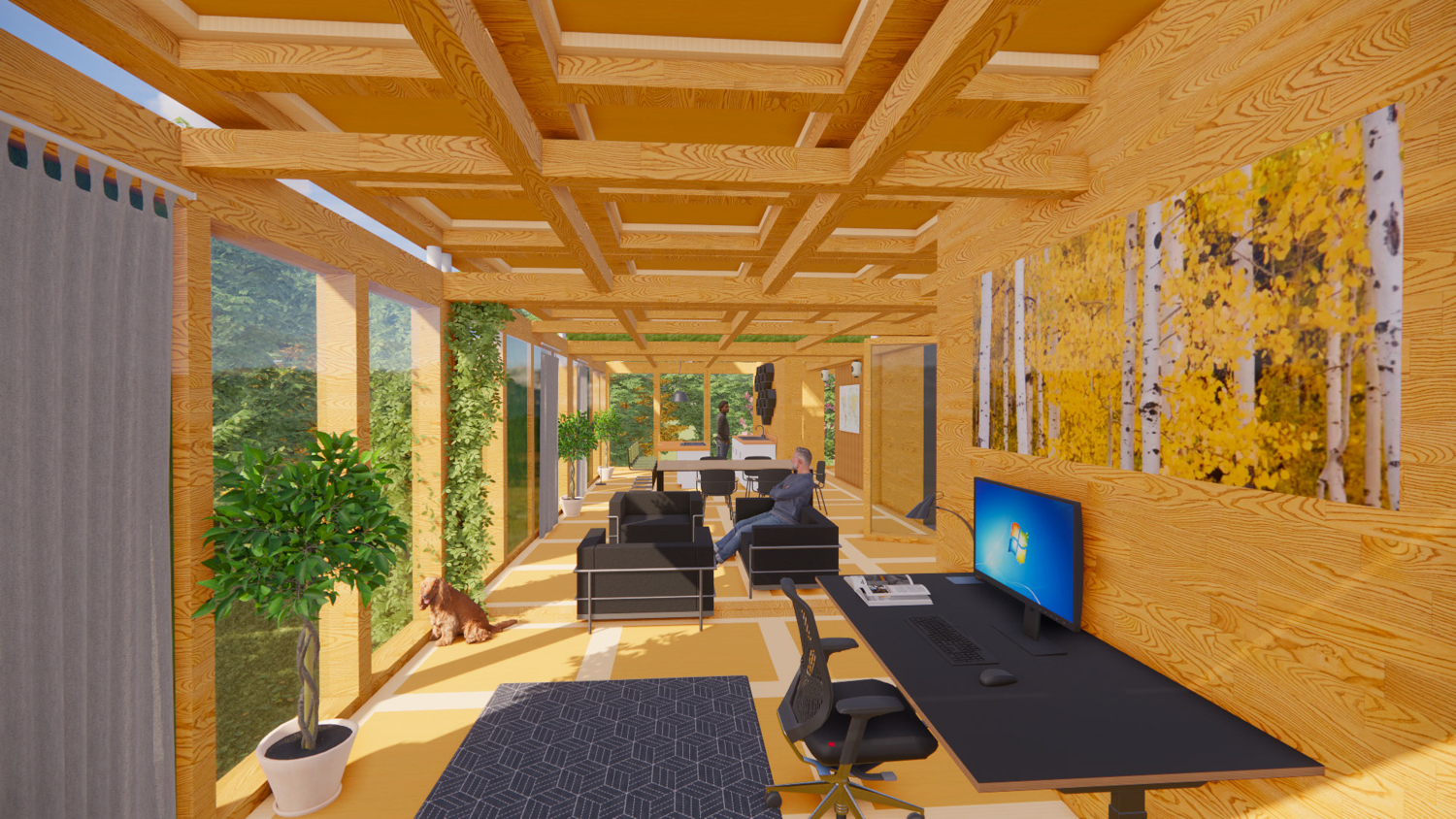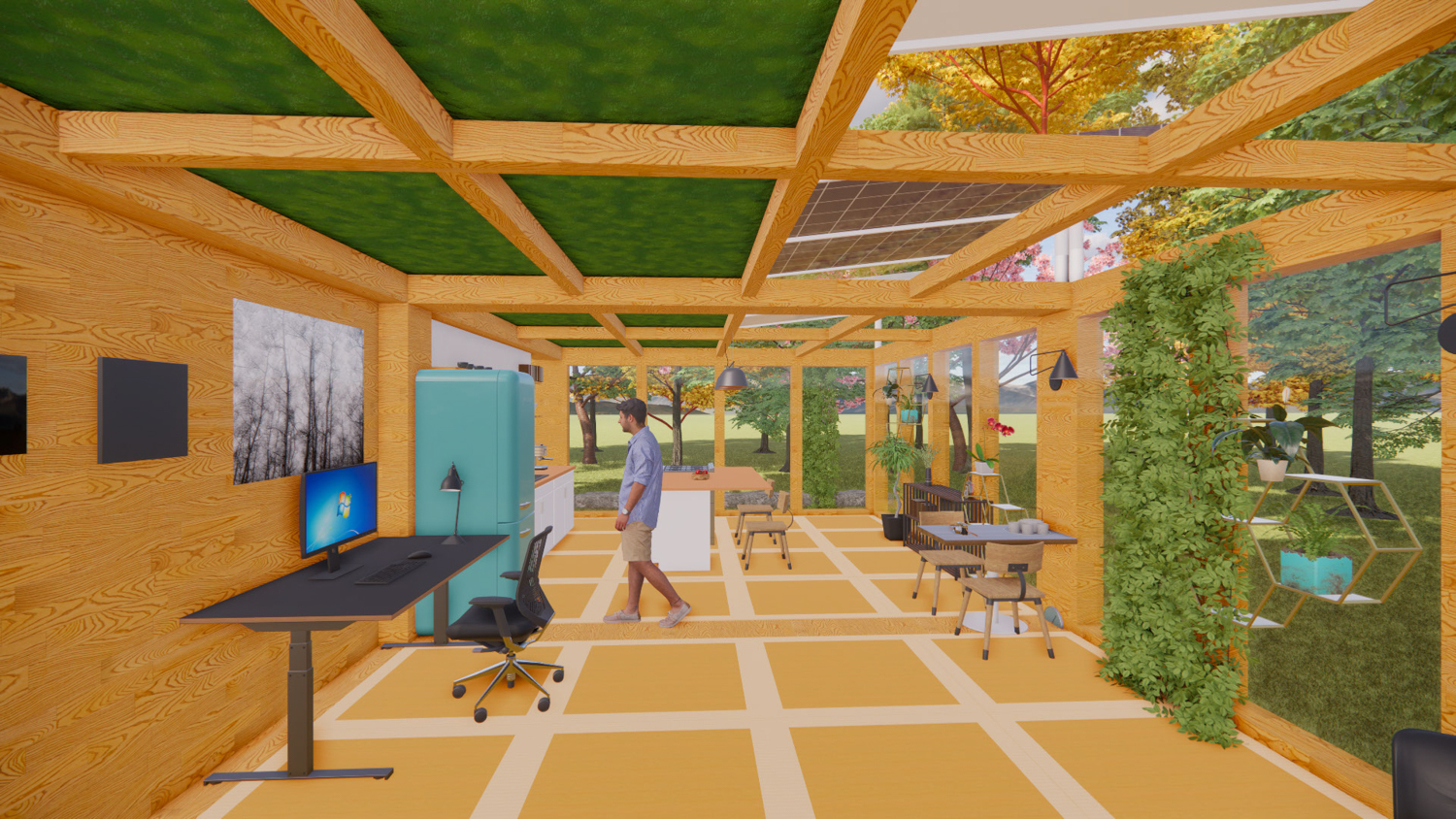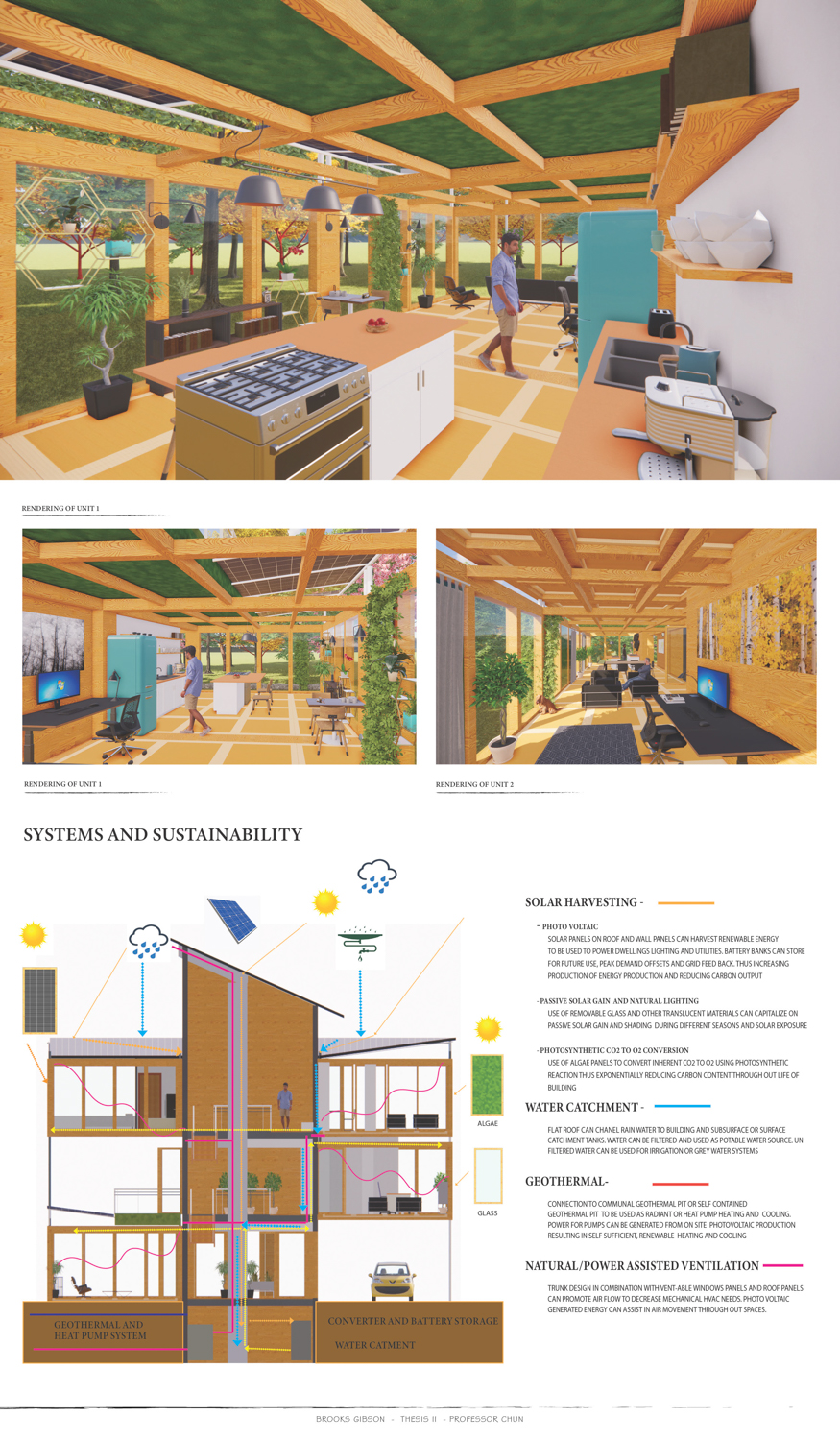Artist Statement
I have been building houses for most of my life. I started working as a carpenter on the Northshore as a teen. The trades were fun, challenging and kept me outside. What started as a summer job evolved into a career. I have always been fascinated with the process of transforming an idea in your head into a solid, tangible, thing especially one you can live in. As the years passed and I worked on more and more projects, I started to feel like there were better ways to do things. Our accepted practices were wasteful and destructive. It became normal to tear down a proud structure that has stood for generations or to pull up a beautiful old-growth wood floor to make room for the tile of the month. Homes are being built for today without vision or adaptability for the future. I turned my interest toward the design process. I feel like there is a better way to build but it starts with the design. My thesis is an attempt to begin the long process of rethinking what a home can be and how it can be built.
Thesis Statement
Biomimicry is the science of studying nature to identify techniques that can be used to solve existing problems in human engineering. For instance, there is a problem in the way we are designing, building, and using residential housing. Accepted building practices are inefficient, wasteful, and harmful to the environment. Using current technology and building methods is not enough to actually redirect the downward ecological direction in which society is headed. While Leed, Netzero, and passive design do offer improvements to existing building practices, these approaches merely prolong the inevitable failure of our relationship with the planet. The solution to these issues is not to “improve” or “reform” the existing system, but rather to rethink it completely through the utilization of biomimicry. Residential houses are designed and built with little thought toward the future. Houses are static non-flexible and survive on the use of nonrenewable energy sources to function. On the other hand, trees have the capability of drawing energy from the sun through their leaves, converting CO2 to O2 through their skin, and drawing water and heat from the ground. An optimal design strategy can thus be derived by studying the way trees grow while retaining flexibility and a non-destructive relation to surrounding environments. Through the integration of technology and biological-based design strategies, single-family homes can benefit from this approach and be developed as living organisms rather than “machine[s] for living”.






